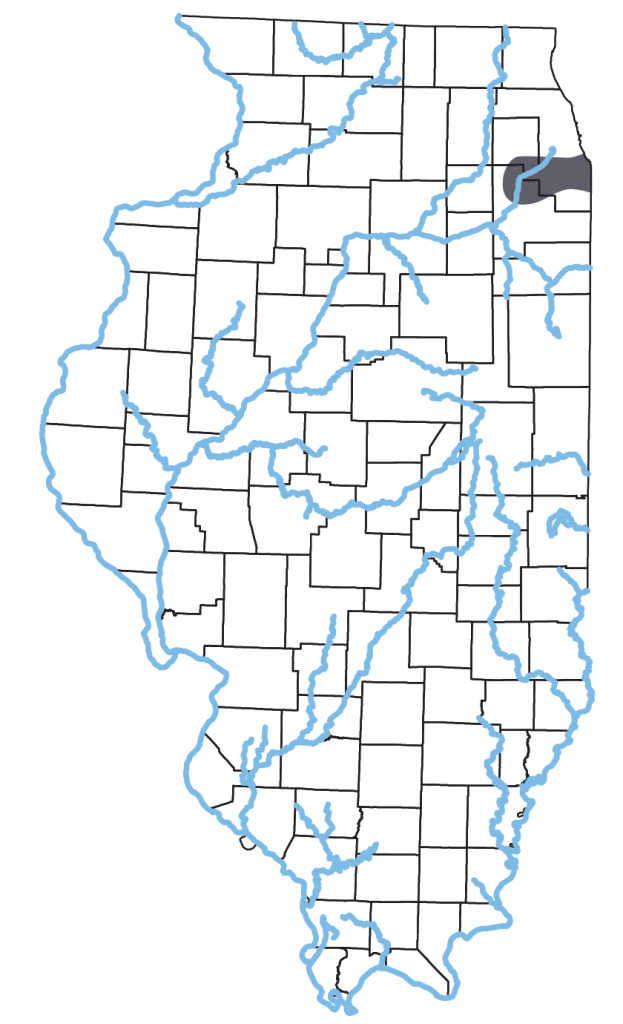Clemmys guttata (Schneider, 1792)
Key Characters: Unhinged plastron; low, smooth-margined, black carapace usually with one to several yellow spots per scute.
Similar Species: Juvenile Blanding’s Turtle. See Key to Adult Turtles of Illinois for help with identification.
Subspecies: None are recognized.
Description: Small (up to 12 cm CL) distinctive turtle with a plastral pattern of dark blotches on light background that becomes darker with age. Head spotted or uniformly dark. Limbs dark above, yellow to orange below. Male usually with tan chin, brown eyes, and slightly concave plastron. Female with yellow chin, orange eyes, and flat plastron.
Habitat: Shallow wetlands including sedge meadows adjoining cattail marshes, and wet dolomite prairies.
Natural History: Cryptic, most noticeable when basking on muskrat lodges or clumps of sedge or cattails. Semiaquatic, moves moderate distances overland between wet areas. Diet includes crayfish, aquatic isopods, and insects. Three to five ellipsoidal eggs (ca. 31 x 18 mm) are laid in one clutch from May to July.
Distribution Notes: No Cook County populations are extant. This species survives in Illinois at two Nature Preserves in Will County.
Status: State endangered. Historically known only from northeastern counties.
Etymology: Clemmys – klemmys (Greek) for tortoise; guttata – gutta (Latin) for drop, spot; guttatus (Latin) for dappled, speckled, spotted.
Original Description: Schneider, J.G. 1792. Beischreibung und Abbbildung einer neuen Art von Wasserschildkrote. Schriften Gesellschaft Naturforschender Freunde Berlin. 10:259-283.
Type Specimen: Not designated.
Type Locality: Not stated.
Original Name: Testudo guttata Schneider, 1792
Nomenclatural History: H. Garman (1892) used the name Chelopus guttatus in his “A synopsis of the reptiles and amphibians of Illinois” (1892. Illinois Laboratory of Natural History Bulletin 3(13):215-388) to refer to the Spotted Turtle in Illinois.


